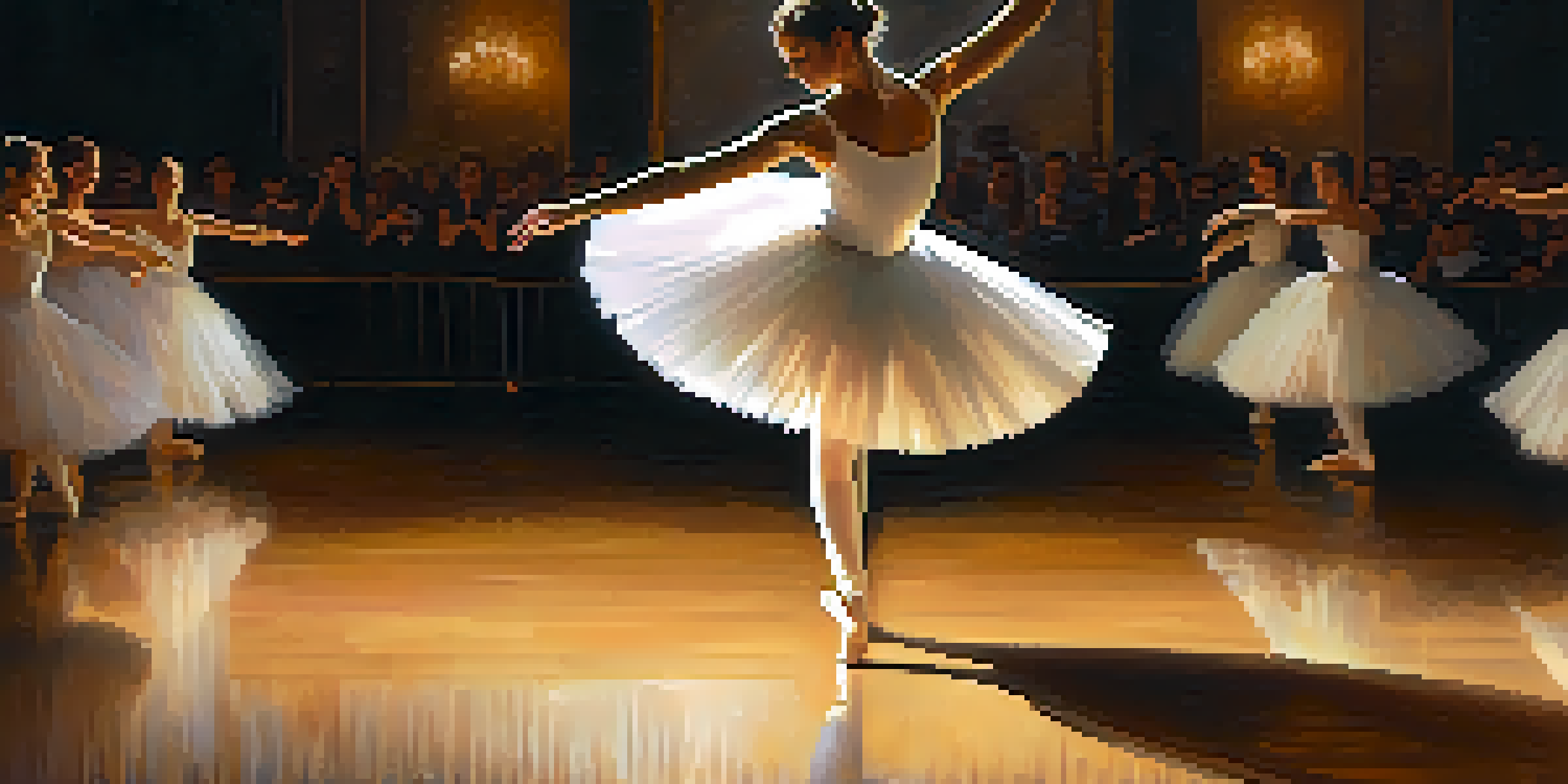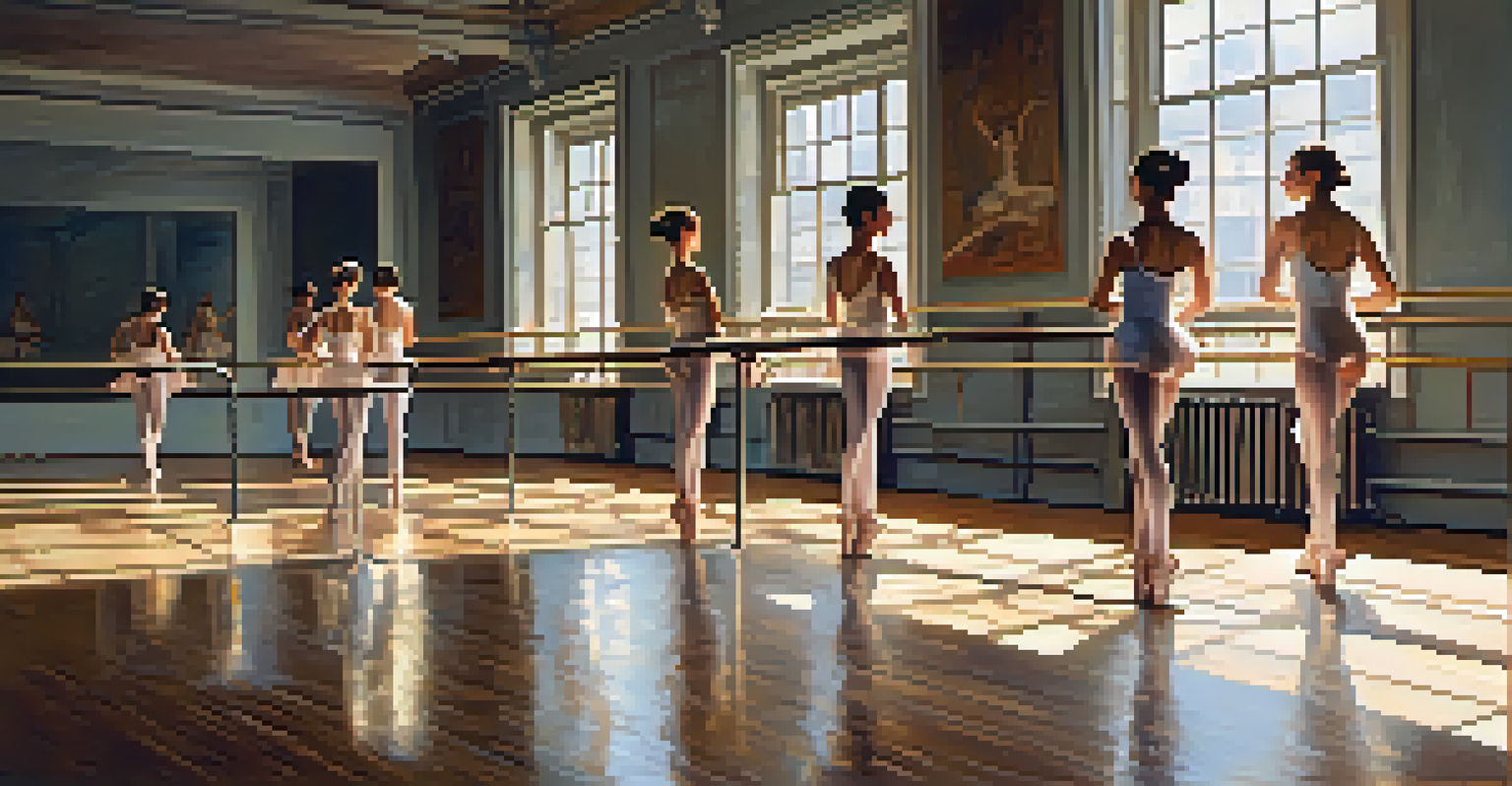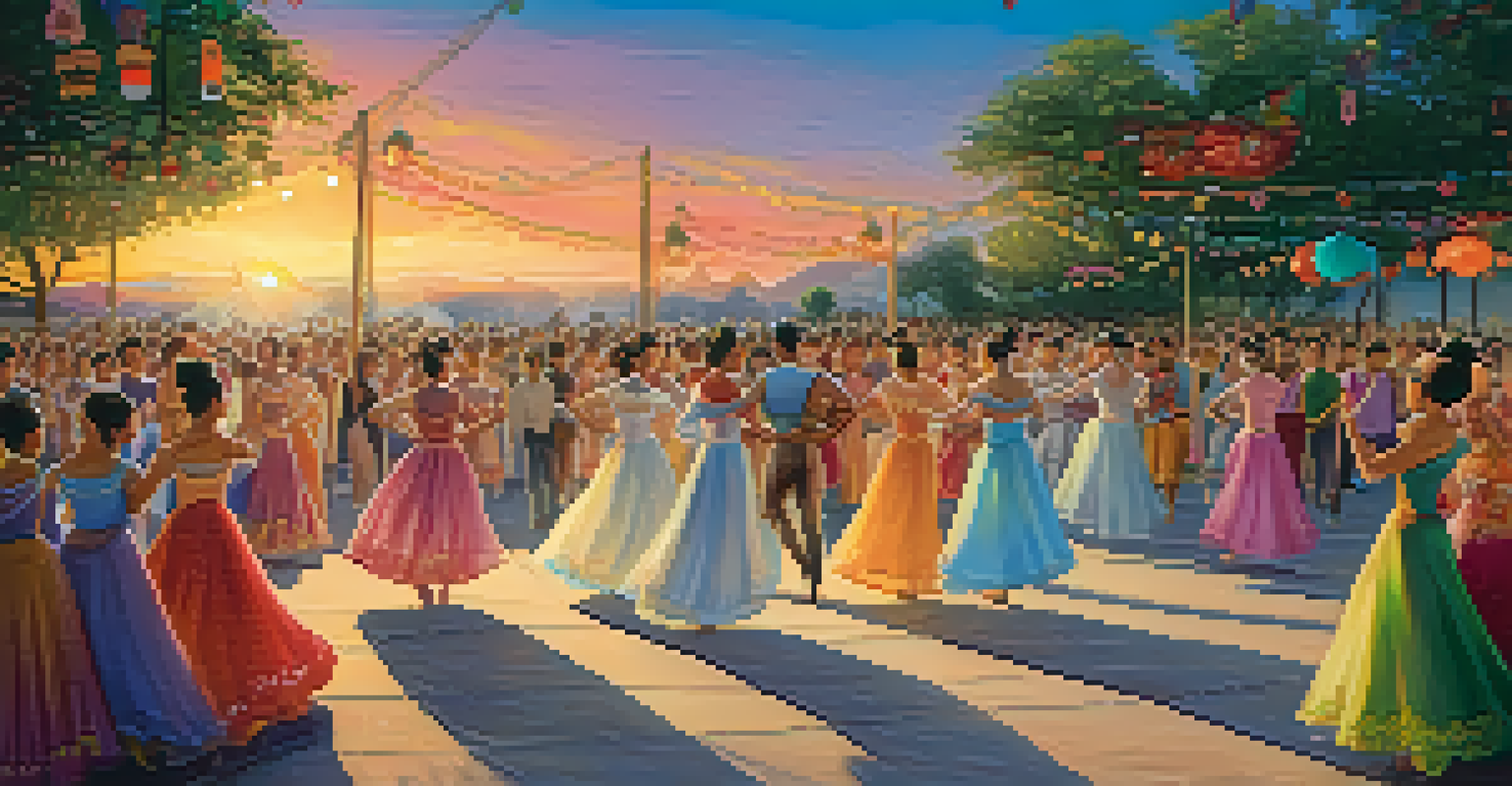The Impact of Ballet on European Cultural Heritage

Ballet's Origins and Historical Significance in Europe
Ballet originated in the Italian Renaissance courts of the 15th century, where it was initially a form of entertainment for the elite. As it spread to France, it evolved into a structured art form, thanks to figures like King Louis XIV, who established the first ballet academy. This historical backdrop laid the groundwork for ballet's development, intertwining it with the cultural fabric of Europe.
Ballet is like a language; it speaks to the soul and transcends the barriers of culture and time.
The transition from court spectacle to a theatrical performance marked a pivotal moment for ballet. It began to reflect the societal values and trends of the times, incorporating elements from literature and drama. This evolution allowed ballet to become a medium through which stories and emotions could be expressed, enhancing its significance in European culture.
By the 19th century, ballet was firmly established in major European cities, with famous ballets like 'Swan Lake' and 'The Nutcracker' captivating audiences. These works not only showcased the artistry of ballet but also highlighted the cultural diversity across Europe, as different regions contributed their unique styles and narratives.
Ballet as a Reflection of European Societal Changes
Throughout its history, ballet has mirrored the societal changes occurring across Europe. For instance, during the Romantic era, the rise of individualism and the exploration of human emotions inspired ballets that emphasized personal stories. This shift allowed audiences to connect with the art form on a deeper level, making it relevant to contemporary issues.

The emergence of modern ballet in the 20th century brought further transformation, as choreographers began to experiment with movement and narrative structure. This innovation not only pushed artistic boundaries but also reflected the tumultuous social and political landscapes of the time, including wars and revolutions. Ballet, therefore, became a lens through which audiences could examine their own realities.
Ballet's Historical Evolution
Ballet evolved from a courtly entertainment to a theatrical art form, reflecting societal values across Europe.
Today, contemporary ballet continues to evolve, frequently addressing modern issues like identity, gender, and cultural diversity. This adaptability ensures that ballet remains an integral part of Europe's cultural dialogue, engaging new generations and fostering discussions about societal values.
The Role of Ballet in National Identity Formation
Ballet has played a significant role in shaping national identities across Europe. Countries like Russia and France have cultivated unique ballet traditions that reflect their cultural heritage and values. For instance, the Bolshoi Ballet in Russia is not just a dance company; it's a symbol of national pride and artistic excellence.
Dance is the hidden language of the soul.
Moreover, national ballet companies often showcase traditional folklore and historical narratives through their performances. This not only preserves cultural heritage but also reinforces a sense of belonging among audiences. Ballet, thus, serves as a bridge connecting generations and fostering pride in national identity.
International ballet competitions and festivals, such as the Prix de Lausanne, further highlight the importance of ballet in promoting cultural exchange. These events allow dancers from various countries to share their styles and techniques, enriching the European cultural tapestry and encouraging collaboration across borders.
Ballet's Influence on Other Art Forms in Europe
The impact of ballet extends beyond dance, influencing various art forms such as music, visual arts, and theater. Composers like Tchaikovsky and Prokofiev created iconic scores specifically for ballet, blending classical music with the expressive nature of dance. These collaborations have resulted in timeless masterpieces that continue to resonate with audiences worldwide.
Visual artists have also drawn inspiration from ballet, capturing its grace and movement in paintings and sculptures. Renowned artists like Edgar Degas famously depicted ballet dancers in his work, highlighting the beauty and discipline of the art form. This intersection between ballet and visual arts enriches European cultural heritage.
Ballet and National Identity
Ballet plays a crucial role in shaping national identities, showcasing cultural heritage and fostering pride among audiences.
Furthermore, the theatrical elements of ballet have significantly influenced drama and performance art. The integration of dance into theater productions has led to innovative storytelling techniques, blurring the lines between different artistic disciplines and creating a more holistic cultural experience.
Ballet Education: Shaping Future Generations of Artists
Ballet education plays a crucial role in ensuring the preservation and evolution of this art form. Renowned institutions across Europe, such as the Royal Ballet School in London and the Paris Opera Ballet School, train young dancers in classical techniques while encouraging creativity and individual expression. This foundation is essential for nurturing the next generation of ballet artists.
In addition to technical training, ballet education often incorporates elements of history and cultural studies. Students learn about the significance of ballet in European heritage, fostering a deeper appreciation for the art form. This holistic approach not only produces skilled dancers but also informed artists who understand the cultural context of their craft.
Moreover, outreach programs and community classes make ballet accessible to diverse populations. By introducing ballet to various communities, these initiatives help cultivate an appreciation for the art form, ensuring its relevance and vitality in contemporary society.
Ballet Festivals: Celebrating European Cultural Exchange
Ballet festivals across Europe serve as vibrant platforms for cultural exchange and celebration. Events like the Edinburgh International Festival and the Venice Biennale showcase a diverse array of performances, bringing together artists from different countries and backgrounds. These festivals not only highlight the richness of ballet but also foster collaboration among dancers, choreographers, and audiences.
Such gatherings allow for the sharing of new ideas and innovative techniques, which can lead to exciting developments within the ballet community. Highlighting both traditional and contemporary works, these festivals encourage dialogue about the evolution of ballet and its relevance in today's world. This spirit of collaboration strengthens the bonds of cultural heritage.
Ballet's Cultural Impact
The influence of ballet extends beyond dance, inspiring music, visual arts, and theater, enriching the European cultural landscape.
Moreover, the international nature of these festivals promotes understanding and appreciation of different ballet styles. Audiences have the opportunity to experience various interpretations of ballet, enriching their cultural knowledge and appreciation for the art form.
The Future of Ballet in European Cultural Heritage
As we look to the future, ballet continues to adapt and evolve, reflecting the dynamic nature of European culture. The integration of technology in performances, such as digital projections and multimedia elements, is reshaping how audiences experience ballet. This innovation not only attracts younger audiences but also broadens the reach of ballet as an art form.
Additionally, the ongoing dialogue about inclusivity and representation in the arts is prompting changes within ballet companies. Increasingly, choreographers are exploring diverse narratives and incorporating varied cultural influences into their works. This shift ensures that ballet remains relevant and resonates with a wider audience.

Ultimately, the future of ballet in European cultural heritage lies in its ability to embrace change while honoring its rich history. By continuing to foster creativity and collaboration, ballet will thrive as a vital expression of Europe's cultural identity for generations to come.